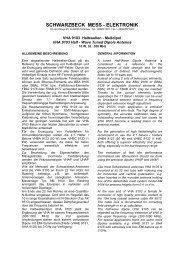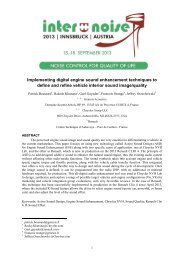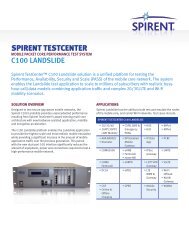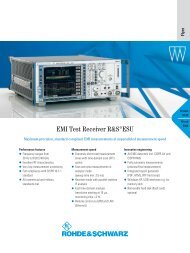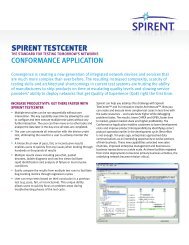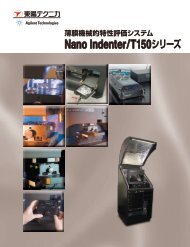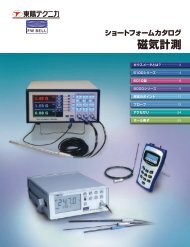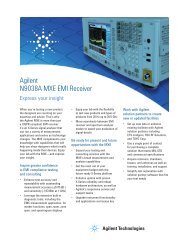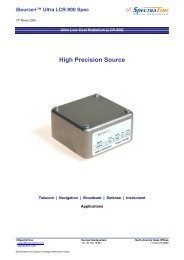Chapter 6: Impedance measurements
Chapter 6: Impedance measurements
Chapter 6: Impedance measurements
Create successful ePaper yourself
Turn your PDF publications into a flip-book with our unique Google optimized e-Paper software.
Acoustic impedance <strong>measurements</strong><br />
A: 25mm Foamex<br />
B: 25mm Foamex with reflective foil<br />
C: 25mm Akotherm (white) D20/25 polyester wool 0.5kg/m 2<br />
D: 25mm Acusticab: 30 kg/m³ polyurethane foam with 0,025mm<br />
polyurethane film on top. At the back is a thin adhesive layer.<br />
E: 1.2kg/m 2 felt that is used for automotive applications<br />
A: Foamex I B: Foamex II C: Akotherm D: Acusticab E: felt<br />
The acoustic field in the tube is measured with a PU probe. First the<br />
probe is calibrated in the tube by measuring the response of the PU probe<br />
without an acoustic sample of the fully reflective end of the closed tube, see<br />
paragraph 6.4. Then a sample is inserted, the impedance is measured and<br />
the reflection and absorption coefficient is calculated.<br />
Fig. 6.22: Left: the acoustic samples are mounted in the tube and measured with the free<br />
field method with a PU match. Right: a large sample is measured.<br />
After this, the free field absorption coefficient is measured and compared<br />
with the Kundt’s tube results. The red lines in Fig. 6.22 show the free field<br />
response when the sample is still mounted in the tube (see Fig. 6.22, left)<br />
and the blue lines show the free field response of a 60cmx60cm sample<br />
(see Fig. 6.22, right).<br />
As can be seen, the Kundt’s tube result matches the free field response if<br />
the sample is mounted in the tube. However the free field response of a<br />
large sample does not always match the response of a small sample<br />
mounted in a tube.<br />
6-26



